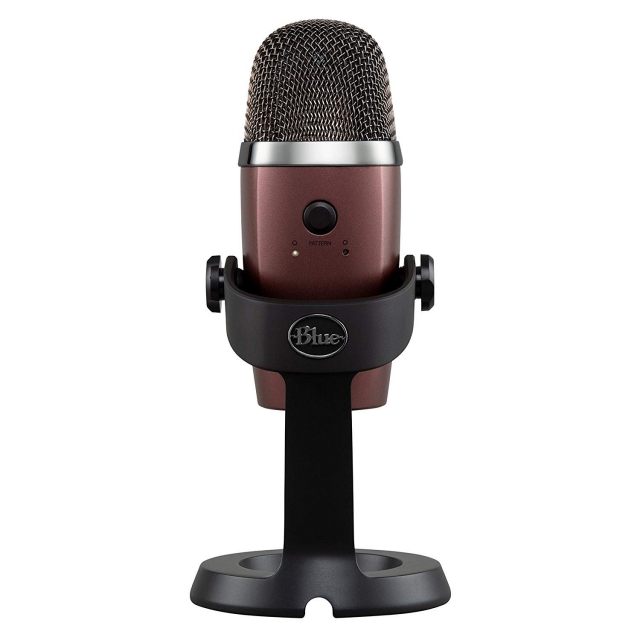
Blue Microphones Yeti Nano Review
A while ago, I had a cheap condenser microphone running off of a phantom power block. It was a mess of cables, but it sounded great. Unfortunately, the operative word there is ‘cheap’, so it lasted about 18 months, then stopped working for no apparent reason. So, I defaulted to the microphone on my headset. It sounded fine, so I was in no rush to get a new standalone microphone.
Until Blue Microphones got in touch, and offered me a Yeti Nano. Of course, I had heard of the company, and over the years had read that their microphones were the go-to for people doing voice acting as a hobby. So, of course, I jumped at the chance to try it out.
The Yeti Nano from Blue Microphones comes with: the microphone, a desk stand, a micro-USB cable, a stand adapter, a quick start guide in seven languages, a registration reminder and a card which tells you where to download the Sherpa software. On the microphone itself, there are two buttons, the micro USB socket and an earphone socket so that you can listen to yourself in real time.

The button on the front (where the Blue logo is) mutes and unmutes, as well as controls the earphone volume if you’ve got something plugged into it. The button on the rear toggles between cardioid and omnidirectional modes - the first one is for a single speaker, the second is for a group. It’s pretty cool that it can switch between the two modes with just a push of a button, in case you get into a surprise podcast, or need to let someone in the room join you in a Discord call.
However, even in cardioid mode the microphone is sensitive enough to pick up other things that are happening in the room. It’s even sensitive enough to pick up things that you cannot hear yourself. When I was first setting the Yeti Nano up, I was listening to the audio to check levels and such. I then realised that, despite the house being silent apart from my PC fans, I could hear two people having a conversation. I couldn’t make out the words, and when I took off my headset I couldn’t hear anything. I had a window open, so I can only assume that it was picking up one of the neighbours, judging by the clattering during the conversation, in their kitchen. Not counting the unoccupied house next door, there wasn’t a kitchen within 100 metres of the microphone.
So yes, it’s sensitive, but how does it sound? The answer, of course, is pretty great. I haven’t had the opportunity to try it out with multiple people, but streaming and recording podcasts sound good. I haven’t tried any voice acting yet, but certainly intend to.

Honestly, I didn’t use it very much with the stand, as I found that it would attach to the boom arm that I used for my old microphone. It has a thread in the bottom, and will easily screw onto a standard mount. Of course, they recommend the Blue Microphones-created boom and mount, but it’s up to you.
If you’re looking for a new microphone, then definitely consider the Yeti Nano. It’s 21.1cm tall (in the stand) and weighs 0.63kg, so is quite portable. Being powered by USB means that it’s suitable for use on the fly, without having to plug in loads of other things first. It’s a great little microphone that’s really sensitive and very clear.
Blue Microphones Yeti Nano Review
The Yeti Nano is on the smaller side, but packs the same wallop as it’s bigger cousins, and is a great addition to the Blue Microphones catalogue.






COMMENTS